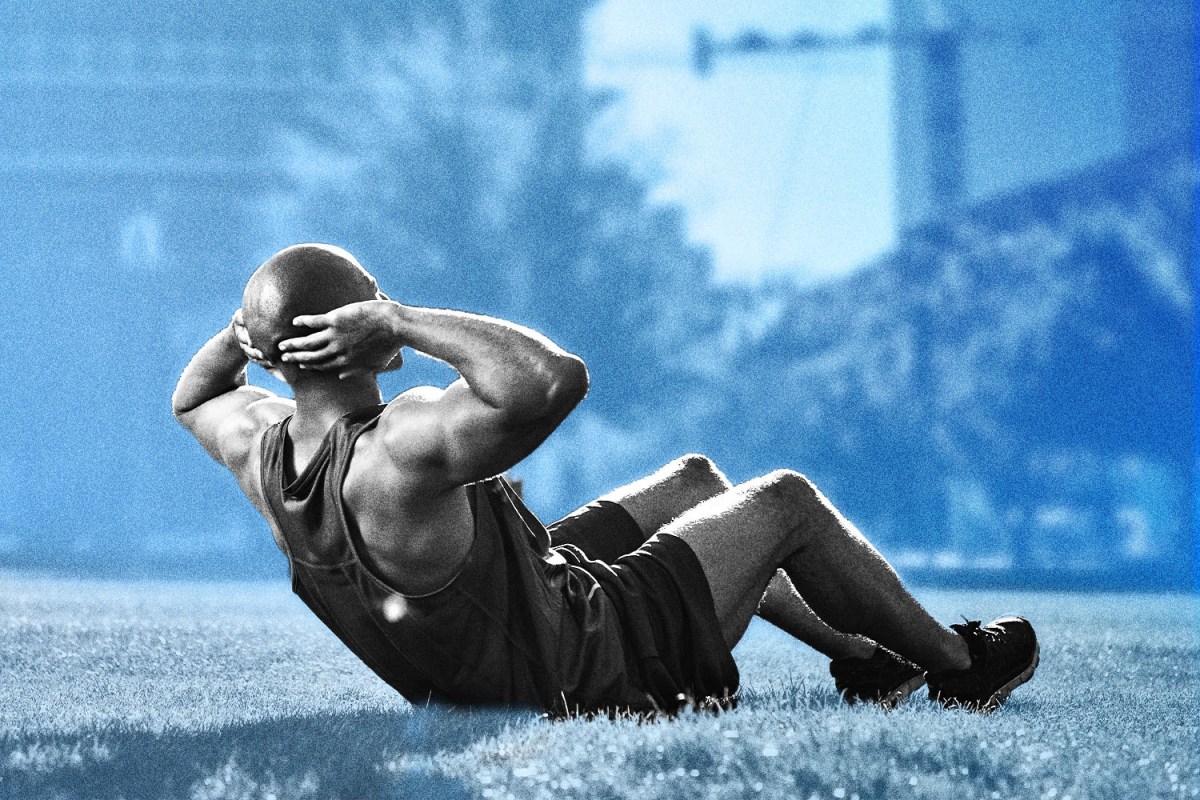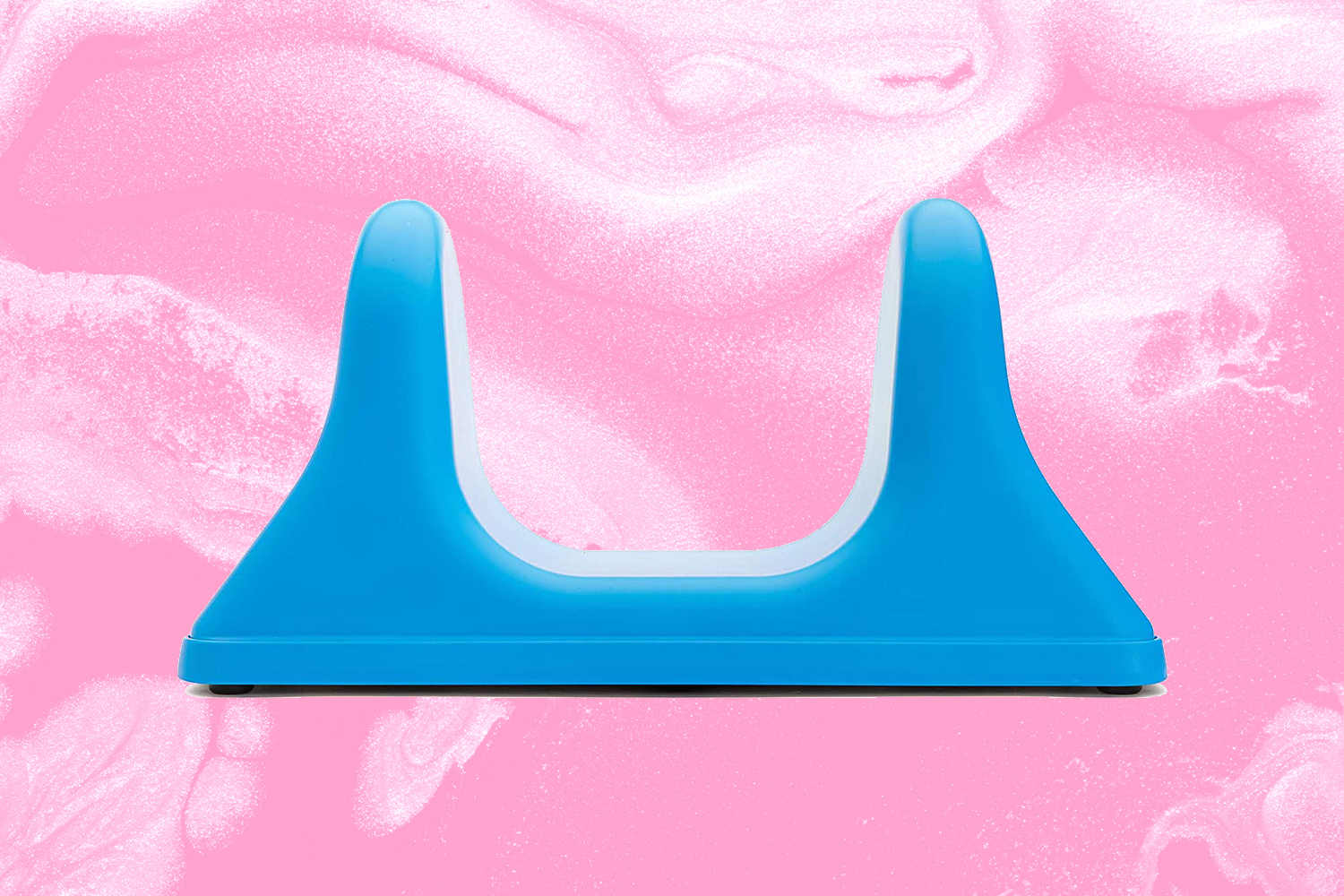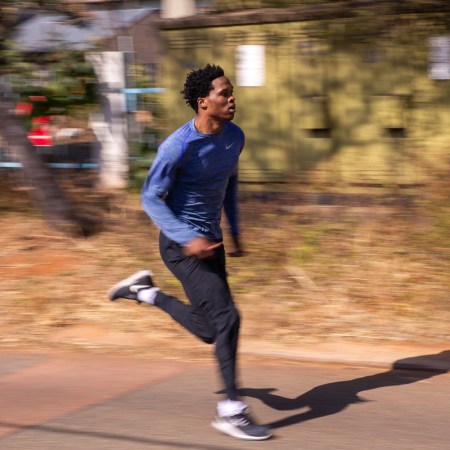For better or worse, we are firmly headed into “get six-pack quick” season. It’s the fitness holy grail that launched a thousand Men’s Health covers, and this year, approaching a summer where most of us will take our shirts off in front of people for the first time in almost two years, it’s inevitable that many will revive the old standby.
Should they? Probably not. Most personal trainers and exercise physiologists caution against beach bod-driven regimens. Overworking “show muscles,” (the biceps, the calves, the abs), can come at the expense of a functional, full-body routine. Overanalyzing the size of those muscles usually leads to unrealistic expectations. If you double down on a diverse workout scheme, quality sleep and a diet that limits non-processed ingredients, you’ll naturally arrive at a tighter core, anyway — all while feeling good about yourself.
Regardless: post-pandemic, once gyms are open again, I know I’ll see a guy in the corner banging out crunches. All credit for the effort, but comparatively, it’s a waste of time. The crunch, along with its cousin, the sit-up (which has a longer range of motion — that’s the one someone holds your feet down for), constitute core training’s most ubiquitous move. But they also represent abdominal work at its most useless.
If you insist on gunning for a washboard midriff this year, start by eliminating crunches and sit-ups. Way back in 2001, the American Council on Exercise, a nonprofit fitness certification provider, ranked the top 13 exercises for strengthening A) the rectus abdominis and B) the obliques. In each list, the “traditional crunch” placed … 11th. In other words, fitness authorities could already think of 10 better moves — like captain’s chair leg raises or bicycle maneuvers — 20 years ago.
Why have we continued to do crunches? Because we know what they look like, we know exactly how to do them. They’re what we learned in school (remember the Presidential Fitness Test?) and they’re montage fodder for every boxing movie ever. Plus, as exercises go, they just aren’t very intimidating. They don’t require any extra equipment, and it’s possible to rack up absurd repetitions — in my crunching heyday, I used to do hundreds at a time — which makes you feel extra accomplished.
But crunches fail to deliver on the two biggest reasons people turn to them: they can’t eliminate belly fat, and they won’t (directly) strengthen the abs. On the first point, it’s understandable that a casual exerciser might select a part of his or her body — like the gut — and imagine doing sit-up after sit-up until the area tightened up. This approach, though, which is known as “targeted fat loss,” or “spot reduction,” is futile. The best way to shed abdominal fat is to monitor calorie intake and observe a consistent cardio routine.
As for building bigger, better abs, crunches actually have a nasty habit of engaging a different muscle group: the hip flexors. Highlighted by the iliacus and the psoas (see them on the body here) they’re the muscles that help you perform basic “hingeing” movements. Like walking, bending and swiveling. They’re a bit paradoxical, though. All that activity makes them strong, but at the same time, all the time we spend hunched over at desks shortens the muscles (here’s a handy diagram), which makes them tight.
The tighter the hip flexors get, the more they pull on the lumbar spine, which causes back pain. Where do crunches fit in? Well, we let our hip flexors take over when we do crunches. They’re closer to where the movement is happening, after all. This leaves the rectus adbominis out of the picture, it completely ignores the obliques, it dares the hip flexors to overstrain themselves (if not tear) and puts even more pressure on the back.
You can even feel it up in your neck. Ever done a bunch of crunches and noticed a dull ache up there? That’s the aftershock of an exercise that just doesn’t care much for proper spinal alignment. To be clear, you can teach yourself to engage your abs during crunches and sit-ups. Professionals call it “getting out of your hip flexors.” It just requires an understanding of proper mechanics and a mastery of mind-muscle connection. You’d also want to get in the habit of proactively “releasing” your psoas muscle.
A better bet for now is to just try your hand at some more effective exercises — moves that involve the entire core and definitely won’t sabotage your back. If you prefer, you can still focus on familiar exercises that have a low intimidation barrier. Think planks, which are endlessly modifiable, and capable of strengthening both the rectus abdominis (the surface-level moneymaker) and the traversus abdominis, located just below. Or pick a move from the ACE’s old list, like bicycle maneuvers, which will also put you on a mat on your back, but require alternating movements (left elbow to right knew, right elbow to left knee) in an effort to hit the abs, deep abs, obliques and your thighs. You could do worse than to add three 45-second planks and three 20-rep sets of bicycle maneuvers performed twice a week after your runs.
I’d encourage you, though (especially if you’ve set some “abs by June or else” resolution), to consider alternative moves that personal trainers have either pioneered or revived in the last 20 years, too. Check out the “reverse crunches” that Gideon Akande’s demonstrating in the Instagram above. Or dive into Jeff Cavaliere’s 10-minute abs workout — it’s a scorcher — which includes creative moves like ab halos, Russian rows and something called “black widow knee slides.” If you can’t bear to part with your crunches, meanwhile, go do them on an inflated yoga ball. Seriously. It remains one of the best ab moves in the game.
In general, though, it’s time to say goodbye. Similar to the bench press, it’s difficult to trust any move that everyone wants to hang on to. Crunches had a good run. They chiseled some abs, but they helped slip some discs, too. This time around, blast your core with a regimen that’ll last beyond the post-pandemic beach weekends.
The Charge will help you move better, think clearer and stay in the game longer. Subscribe to our wellness newsletter today.
























